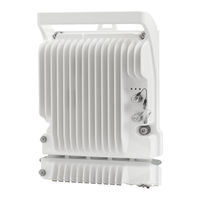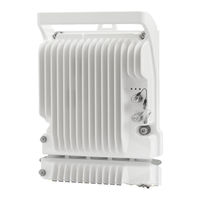User Manuals: Cambium Networks PTP 820C Backhaul
Manuals and User Guides for Cambium Networks PTP 820C Backhaul. We have 5 Cambium Networks PTP 820C Backhaul manuals available for free PDF download: User Manual, Installation Manual, Quick Start Manual, Installation Instructions
Cambium Networks PTP 820C User Manual (672 pages)
Brand: Cambium Networks
|
Category: Network Hardware
|
Size: 10 MB
Table of Contents
-
-
Feedback31
-
Purpose31
-
Cautions34
-
Notes34
-
Warnings34
-
Introduction36
-
Ptp 820C37
-
Ptp 820S37
-
PC Setup50
-
LAG Overview99
-
Configuring XPIC103
-
XPIC Overview103
-
Resetting MIMO118
-
Unit Management122
-
Configuring NTP156
-
Configuring ATPC166
-
Table 24 XPI Pms188
-
RMON Statistics220
-
Qos Overview228
-
Marking Overview245
-
Enabling Marking246
-
Configuring WRED249
-
WRED Overview249
-
Configuring LLDP275
-
LLDP Overview275
-
Synchronization293
-
RADIUS Overview306
-
General (CLI)370
-
PC Setup (CLI)370
-
Logging on (CLI)371
-
Maintenance627
-
MIMO Port629
-
RSL Interface631
-
Source Sharing631
-
PTP 820C Leds632
-
Protection LED633
-
Radio LED633
-
Status LED633
-
RSL Interface636
-
PTP 820S Leds637
-
Protection LED638
-
Status LED638
-
Data Port639
-
Poe Port639
-
Radio LED640
-
Alarms List641
-
Glossary666
Advertisement
Cambium Networks PTP 820C Installation Manual (206 pages)
System Release 10.0
Brand: Cambium Networks
|
Category: Network Router
|
Size: 6 MB
Table of Contents
-
-
-
Poe Injector30
-
-
Poe Injector36
-
Power Specs39
-
-
-
-
-
-
List of Items106
-
Required Tools107
-
Insertion Loss107
-
6-13 Ghz109
-
-
-
List of Items114
-
Required Tools114
-
Insertion Loss115
-
6-13 Ghz116
-
15-38 Ghz118
-
-
-
List of Items120
-
Required Tools120
-
Insertion Loss121
-
Procedure121
-
-
-
List of Items124
-
Required Tools124
-
Insertion Loss125
-
6-13 Ghz128
-
-
-
List of Items132
-
Required Tools132
-
Insertion Loss132
-
Procedure134
-
-
-
List of Items137
-
Required Tools137
-
Insertion Loss138
-
6-13 Ghz138
-
15-38 Ghz142
-
-
-
List of Items158
-
Required Tools158
-
Insertion Loss158
-
Procedure159
-
-
-
List of Items163
-
Required Tools163
-
Insertion Loss163
-
6-13 Ghz164
-
-
-
List of Items168
-
Required Tools168
-
Insertion Loss169
-
Procedure170
-
-
-
List of Items172
-
Required Tools172
-
Procedure172
-
-
-
List of Items174
-
Required Tools174
-
6-13Ghz175
-
15-38 Ghz177
-
-
1+1 Hsb-Sd183
-
List of Items183
-
Required Tools183
-
6-13Ghz183
-
15-42Ghz185
-
-
AFR 1+0 Hub Site187
-
List of Items187
-
Required Tools187
-
Insertion Loss188
-
6-13 Ghz190
-
15-38 Ghz192
-
-
-
Figure 5 OMT194
Cambium Networks PTP 820C Quick Start Manual (23 pages)
Brand: Cambium Networks
|
Category: Network Router
|
Size: 2 MB
Table of Contents
Advertisement
Cambium Networks PTP 820C Installation Instructions (3 pages)
Backhaul mount to Dragonwave Antenna Interface
Brand: Cambium Networks
|
Category: Antenna
|
Size: 0 MB
Table of Contents
Cambium Networks PTP 820C Installation Instructions (3 pages)
PoE Injector
Brand: Cambium Networks
|
Category: Wireless Access Point
|
Size: 0 MB




